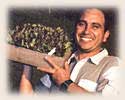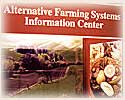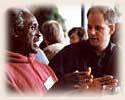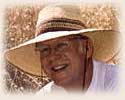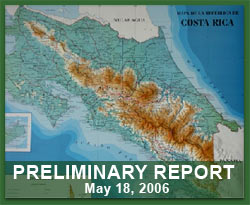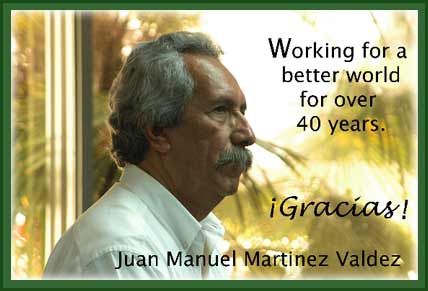• Jack Perella
from his Finca del Lago Farm in Costa Rica asked
John Jeavons, Director of Ecology Action in Willits,
California in the year 2000, if he would come and
teach an economic mini-farming workshop in Costa
Rica. The purpose of this event was to give small
farmers a more competitive edge in relation to larger
farmers. Jack’s perseverance and astute selection
of key farmers and development professionals to
be Costa Rica participants, as well as facilities
and demonstration sites for the Six-Day Workshop
also made a difference.
The quality and caliber of the participants chosen
and encouraged by Juan and Jack was incredibly good
and made up a very proactive cooperative group.
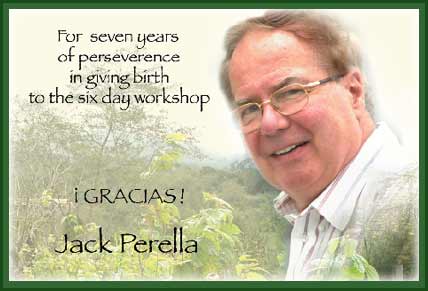
• John Jeavons replied to Jack’s
request for Biointensive training that he would
love to give the workshop, but, because his schedule
was so busy, he would like the event to be for all
Spanish-speaking peoples. Thus began a process of
locating those best able to benefit and share the
information and skills. Next, the funding needed
to be raised at a level to bring participants and
facilitators from 18 countries in a Peak-Oil world
to Costa Rica and provide good lodging, food and
conference facilities.

• History played an important
part as well. The increasing cost of fuel and other
fossil-fuel based farming inputs, increasing degradation
of soils, water shortages, rising population levels,
a desire for food security and political stability
provided high levels of motivation for people interested
in being able to be more self-reliant. GROW BIOINTENSIVE
Sustainable Mini-Farming demonstrated the capacity
to bring expenses within reach through: its use
of locally available inputs, a high energy and water
efficiency not dependent on the use of fossil fuels
and by being a practical way for community members
to work together to create better communities and
thriving mini-ecosystems in which to live.

• The holding of the event at
ICAES (Instituto Centroamericano de Estudios Sociales
/Central American Institute for Social Studies)
which is a perfect low-key, pleasant location with
friendly staff, good food and good lodging.
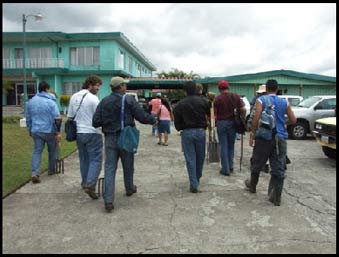
• The event was opened by the
Costa Rican Minister of Agriculture for the President
of Costa Rica, who had planned to give the inagural
speech, but was busy briefing the new Costa Rican
President-Elect.
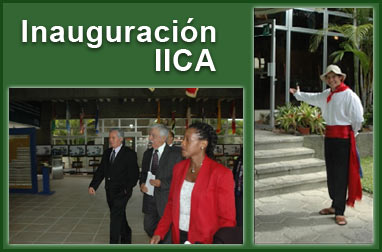
• The placement of the initial
morning introductory presentations with over 200
people present at the Institute for Interamerican
Cooperation in Agriculture - IICA, an internationally
respected organization with 34 country members.
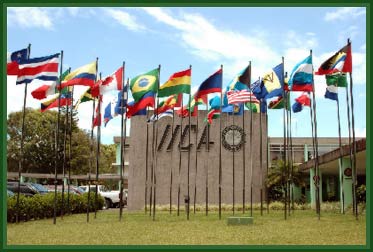
IICA now wants to be a key conduit
for Ecology Action GROW BIOINTENSIVE information
through its Del Cedadi communications section, including
publications and courses throughout Latin and Central
America and the Carribean. Its members are: Antigua
and Barbuda. Argentina, Bahamas, Barbados, Belize,
Bolivia, Brazil, Canada, Chile, Colombia, Costa
Rica, Dominica, Dominican Republic, Ecuador, El
Salvador, Grenada, Guyana, Guatemala, Haiti, Honduras,
Jamaica, Miam (Florida), Mexico, Nicaragua, Panama,
Paraguay, Peru, Saint Lucia, Spain, St. Kitts and
Nevis, St. Vincent and the Grenadines, Suriname,
Trinidad and Tobago, United States of America, Uruguay,
and Venezuela. John Jeavons’ two-hour presentation
on GROW BIOINTENSIVE and its relevance in today’s
world was simulcast to all of IICA’s offices
in this network.
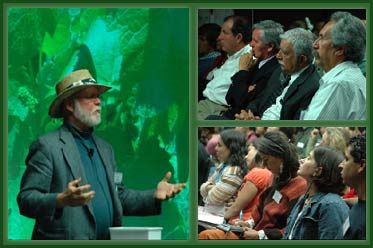

Community and Family
The Mayans in Guatemala 1,000
years ago thrived with local neighborhood Biointensive
food raising when other Civilizations disappeared
due to inability to cope.
• During four of the mornings, demonstration
gardens were made by the participants as part of
their training. These mini-farms were created at
a high school, three elementary schools and other
key locations for a total of nine sites. The participants
commented on how much they enjoyed doing this and
how they got to know each other and to work better
together as a team in this way. The participants
got as much out of working together as from the
information and skills imparted.
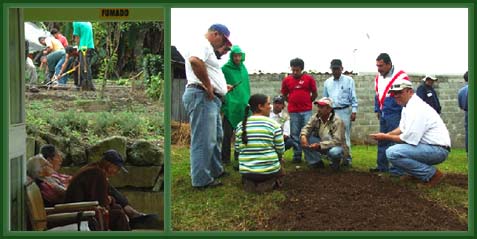
• 15-minute PowerPoint presentations
were given by participants from each of the countries
during four of the evenings. These were well done,
informative and enjoyed by all. We came away with
a good feeling about the things being done to make
the world a better place in which to live. On the
last afternoon, two PowerPoint presentations were
given of color photos taken by professional photographer
Amy Melious and put together on the computer by
Salvador Diaz, who was an Ecology Action Intern
last year. One presentation was of the event as
a whole and the other was of the development of
the newly established demonstration mini-farm gardens.
• The fiesta dinner was
held on the last night. It had amazing local music
played by young people of high school age, a humorist,
dancing to the music by participants, dancing by
local people in costume, a fire dancer from Mexico,
who was also one of the participants, and additional
music played by some of the participants from Costa
Rica and Mexico.

The Result
A wonderful bonding occurred beyond anyone's expectations,
everyone really enjoyed the Workshop, I have never
seen so many truly happy people in one place after
any training, and a living Spanish-speaking world
plus Brazil, Italy, Canada and the U.S. team was
catalyzed. Most of the participants spontaneously
expressed a strong desire to truly implement the
Method in their areas.
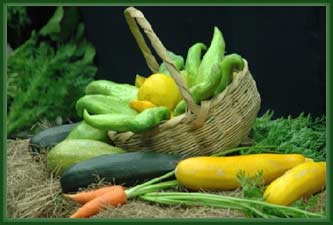
Reflections on Latin America and
the World
The Six-Day Workshop occurred
during another important time in history—not
just at the intersection with the upcoming Post
Fosile Fuel Era. Unlike most of the rest of the
world, the Latin and Central American, Carrbbean
and Brazilian Region has, on the average, twice
the farmable land per person than is needed—even
though some countries, such as Colombia, Costa Rica,
Haiti and Venezuela have more or less enough. The
Region is also rich in resources including oil,
trees, food and minerals.

To feed these new visitors to
the planet requires 13,000 hectares, or 34,000
more acres, of farmable soil in the world each
day. It is not happening.
The Workshop allowed the participants
time to reflect on this era and how they might proactively
create the best possible future for themselves and
the other three-quarters of a billion people in
their region.
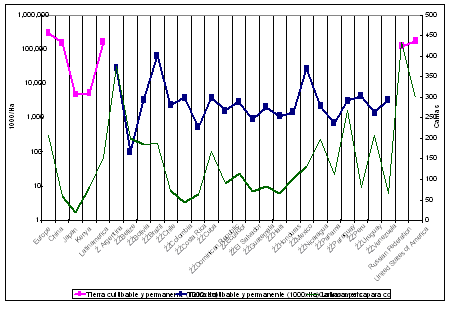
Needs for the Future
For the future
• more expertise will need to be developed
for the 40-Bed Mini-Ag Center/Soil Test Stations,
except for the Veracruz, Mexico, site,
• more data orientation will be needed for
all key sites in the Spanish-speaking regions and
the World,
• a corps of well-trained volunteers may be
able to fill the need for transmittal of improved
record keeping skills,
• more seed growing, collection and preservation
skills need to be emphasized,
• the development of stronger tools needs to
be encouraged,
• publication availability needs to be increased,
• the GROW BIOINTENSIVE Interactive Basic-Level
Training Manual needs to be completed, published
and tested in order to facilitate training and teaching
standards,
• ECOPOL will need an administrative aide,
and more travel funds will be required in the short-term
to accelerate the transfer of skills.
An Opportunity
The Workshop report below seems
to demonstrate that a relatively low-budget initiative
can have a major impact. Most of the initiatives
for The Future can have parallel leverage, but,
as many more countries become involved and more
initiatives occur, a significant amount of focus
will need to be spent on funding of key projects.
Participating Countries, Activities,
and Strategies for the Future
The following is a summary of
the participating countries, activities being pursued
by them and strategies for the future.
1. Argentina:
Fernando PÌa is still in charge of the activities
of the Biointensive Method in the southern part
of Argentina and people that have taken courses
with him are putting the Method into practice. However,
since a national extension program does not exist
for northern Argentina, more needs to be accomplished.
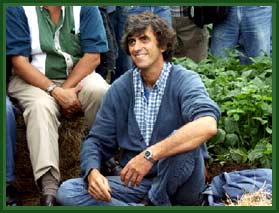
After visiting the rest of the countries
in the continent, Juan Manuel Martinez Valdez is
planning to increase the work with universities
and organizations in the north. Some of them have
already taken a course with him in Paraguay but
they were not able to attend the Costa Rica Workshop
because of funding limitations.
2. Belize: ECOPOL
made an agreement with Ana Maria Choo and Armando
Choco to organize a three-day workshop in their
communities and give talks at universities to invite
them to participate in Biointensive activities.
The probable period for these is at the end of May,
2006.
One extraordinary activity going
on in Belize is the growing of cacao by native peoples
for income. These people are already self-sufficient
in land and food, but have been able to earn the
national average income by just growing this crop
on a part time basis with conventional farming practices.
This was a good example of effective local initiative
for everyone at the Workshop.
3. Bolivia: Two
Biointnensive training workshops will be given in
August 2006— one in Santa Cruz and another
in Cochabamba. ECOPOL and the local organizations
will try to involve at least one university in each
area.
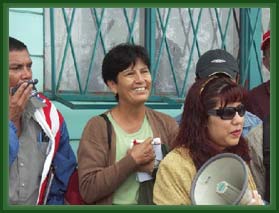
In addition, Ecology Action has
already accepted Anel Rojas Gonzales from Bolivia
as a six-month Intern for its 2006 growing season
and is considering a second candidate from Bolivia
as the result of the Costa Rican Workshop. Bolivia
is one of the most impoverished countries in the
world and the second candidate and his wife are
interested in establishing a GROW BIOINTENSIVE Mini-Ag
Center/Soil Test Station there.
4. Brazil: A
workshop for farmers and promoters from Ecoa, Rede
Pantanal will be given October, 2006, when the flooded
lands of the marshland drain for some months (and
there are fewer mosquitoes). After that, Juan Manuel
will visit two universities in Curitiba and will
invite them to take part in Biointensive activities
through the signing of an agreement.
5. Colombia:
Don Ramόn Montoya, IICA’s Ambassador
for Costa Rica, offered to arrange an ECOPOL visit
to a group of Colombian universities in September
2006, to give some talks and invite these institutions
to promote the Biointensive Method through their
extension programs with communities around the country.
The professors from this country that participated
in the Workshop were enthusiastic about the possibility
of establishing a research center for the Method
at the Universidad Catolica de Oriente.
There is an awareness in Colombia,
which has little more than enough farmable land
to feed its population with locally grown food,
that for food security and political stability the
low income people need to be able to raise their
nutrition with locally available resources. John
Jeavons spoke with Don Montoya, who will soon be
retiring to work in Colombia, his native country,
about the desirability of a 15-year strategic plan
being developed for Colombian food security—especially
in light of the high level of food importation occurring
in Colombia.
6. Costa Rica:
Our host country is the most complex one due to
the number of participating organizations; however
one of our Workshop’s co-sponsors, the Movimiento
de Agricultura Organica Costarricense (MAOCO) and
some participants from the Ministry of Agriculture
and Livestock (MAG) requested a visit by ECOPOL
to give a course to some producers from two of their
main working areas. The probable date for this is
in late November 2006.
MAOCO has also expressed interest
in a national Biointensive Workshop to occur in
March or April 2007, and in establishing a project
to produce strong D-handled spades and forks for
Central and Latin America using local factories.
Both of these projects are under active evaluation.
There is interest in a 40-Bed
Mini-Ag Center/Soil Test Station being part of INA–Instituto
Nacional de Aprendizaje (Nacional Institute for
Learning). This is the Costa Rican Agricultural
Research Farm just an hour away from where the Workshop
was held. In addition, Felicia Echeverria Hermoso,
one of the main organic farming movement forces
in Costa Rica, a top aide to the Costa Rican Minister
of Agriculture and Livestock, and a Workshop participant,
is interested in having a similar Center/Station
on the farm area she has just obtained.
Reinhold Muschleer, international
consultant on agroecology, agroforestry and organic
production in the tropics and expert on tropical
compost was an active Workshop participant and was
an information and publication resource for everyone.
He also volunteered to translate into Spanish the
second edition of Ecology Action’s Growing
to Seed Self-Teaching Mini-Series booklet on
how to grow all your seeds in the smallest area
while preserving genetic diversity.
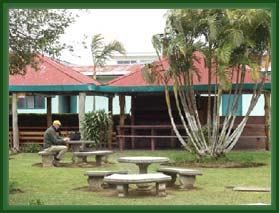
In addition, one of the Costa
Rican participants is seriously considering building
solar seed dryers for the tropics through his company,
Sol Verde Cooperativa in Guanacaste. He is already
building solar dryers and successfully teaching
women how to build them to lighten their domestic
workload. Tropical seed dryers are very important
for the humid tropics, since it is difficult to
get the seeds fully dry and that greatly impairs
their storage life.
Long Island University sent five
of the US students taking an Internship in Biodiversity
at its Costa Rican site to be participants in the
Workshop. One from Arkansas expressed a strong interest
in participating in a six-month Internship with
Ecology Action in 2007.
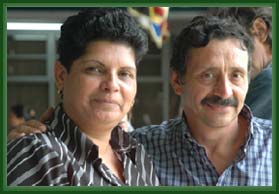
7. Chile: The
Biointensive practitioners from Chile are going
to notify Juan Manuel of the most convenient date
to give a course and will identify the most likely
university to actively participate in Biointensive
research.
8. Ecuador: Mercedes
Torres Berrones, Director of ADYS (Self-Sufficiency,
Development and Society), a non-profit organization,
is continuing her many Biointensive projects and
is now working with the Universidad Tècnica
del Centro. This university will actively join the
network to incorporate lines of investigation about
the Method in the Andean region. A major accomplishment
last year was the Ministry of Agriculture’s
establishing an annual $50,000 amount for Biointensive
in its budget. A major part of these funds is being
used so ADYS can train children and their families
in Biointensive, so the children will be able to
have enough food to eat without having to go to
work at low paying jobs in less than optimal work
environments. It is also hoped that ADYS will soon
have a 40-Bed Mini-Ag Center/Soil Test Station as
a national demonstration, learning and training
resource.
9. El Salvador:
The five representatives from the Salvadorean delegation
were some of the most interested people in working
with the Method as soon as possible. In order to
do so, they will organize one or two workshops for
a minimum of 20 organizations. Probable date: the
second week of November 2006 with Juan Manuel participating.
These representatives were not from non-profit organizations
with budgets, but were from volunteer organizations,
whose staff work at other jobs for income. They
indicated that this works best, because their organizations
do not collapse with fluctuations in funding. A
goal of this group of five organizations is to obtain
200 sets of digging tools for use in their programs
over the next two years. This group also said it
wants to send an Intern to Willits for an Ecology
Action six-month Internship during 2007.
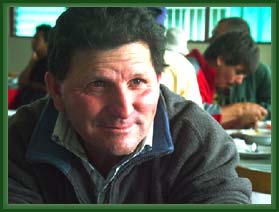
One representative, Francisco
Antonia Rodas of the Asociacion de Productores de
Regantes al Almendro Abajo, described his project
as providing 300 Biointensive growing beds for 100
essentially homeless children!
10. Guatemala:
Due to the geographical and cultural closeness with
the Mexican Republic, this country can be visited
as soon as they organize a workshop. They offered
to organize a 3-day workshop. Probable date: September
2006.
11. Mèxico:
A wonderful surprise is that Ricardo Romero and
Karla Arroyo Rizo are developing their skills as
speakers and administrators of the Las Cañadas
program in Veracruz state more and more. With the
addition of Anja Lyngbaeck to their staff, they
promise to be a tremendous team that in a near future
could become one of the most important demonstration
centers of the Biointensive Method in the Spanish-speaking
world. Las Canadas already has a 40-Bed Mini-Ag
Center/Soil Test Station and they will soon have
five staff members skilled in overall Biointensive
with each specializing in one of the following areas:
Soil and Compost, Diet and Nutrition, Trees, Seeds
and Income. They already have facilities for short-term
workshops and lodging for up to six longer-term
Interns. As a result of a new Ecology Action GROW
BIOINTENSIVE Goals paper and conversations between
Ricardo and John Jeavons, Las Canadas will soon
have a three-tier program of learning opportunities
for Biointensive: One-Week, Three- to Four-Week,
and Six-Month. Karla has begun a seed growing economic
mini-farm and the University of Chapingo will be
studying its effectiveness this year.
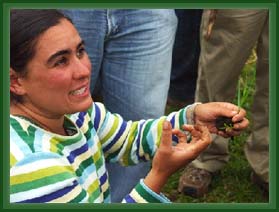
Dr. Angelica Ma. Arango H., Academic
Director of the Mexican Institute de Diencias Avanzadas,
A.C., also a Costa Rican Workshop participant, expressed
interest in supporting Biointensive work during
a meeting with John Jeavons.
Two six-month Special Interns
from Mexico are already scheduled for Ecology Action’s
training program in conjunction with the Golden
Rule Community. They are a couple from Aguascalientes
state, Jose Augustin Medina Macias and his wife,
Marisol Tenorio Lopez.
12. Nicaragua:
In November 2006, ECOPOL will be giving a course
to some small scale organic producers in Jinotega
that want to use the Method to reduce their food
dependency and to produce organic seeds.
13. Panama: Panama
is working on scheduling a Biointensive course for
sometime in the first months 2007—possibly
with other participants from the Workshop teaching.
14. Paraguay:
In August 2006, after he finishes giving workshops
in Bolivia, Juan Manuel will visit Paraguay and
will join Fernando PÌa to teach a course
there.
This visit is of particular importance
because the Paraguayan Foundation and its farming
school have among their plans the production of
organic seeds and the installation of a GROW BIOINTENSIVE
demonstration garden for demonstration and research.
Juan Manuel suggested that they establish a 40-Bed
Mini-Ag Center/Soil Test Station. They were interested
and will hire one more person to be able to do so.
Already this school has 800 Biointensive growing
beds run by a graduate of EARTH University. The
school’s 100 students work the growing area
as part of their 3-year farming education program.
15. Peru: Juan
Manuel will spend three weeks in Peru during June
2006: one to take a course about organic seeds with
Dominique Guillette, another one to give a course
in Cusco with Ruth Huayta Mango, a Costa Rica Workshop
participant, and the last week to attend the organic
agriculture annual fair in which three conferences
will be given to the participants and the working
area of the Instituto Rural Valle Grande high-altitude
herb farm will be visited. This institute is planning
to use the Biointensive Method in their “andenerÌas”
(Incaic balconies from the prehispanic period).
The two proprietors of this institute have been
doing Biointensive for some time, were participants
in the Costa Rican Workshop, market USDA Approved
organic herbal teas of high quality, and also employ
children in the harvesting of the herbs, so they
will have healthy jobs and a positive farming experience.
Juan Manuel will also visit the national university
to invite them to participate in a line of investigation
to compare present yields in those “andenerÌas”.
Yesica Nina Cusiyuipanqui, Ecology
Action 6-month Special Intern at the Golden Rule
site in 2005-2006, will be invited to participate
in the Cusco course. Yesica and her family have
a farm in this area. Yesica was sponsored by the
US-based MESA program in her Willits learning experience
and received a $700 grant from MESA for her project
upon returning to Peru. Yesica’s goal is to
establish a 40-Bed Mini-
Ag Center/Soil Test Station for the people of Peru
on her farm. Tania Zuniga Moreno of Peru, also a
MESA-sponsored farming student in 2005-2006 in California
will be assisting her. Tania received a 3-Day GROW
BIOINTENSIVE Introductory Workshop scholarship and
was a participant in the one given in March 2006.
Yesica is also sharing her learning with two Peruvian
university professors.
16. Uruguay:
In May 2006, people in Uruguay will begin giving
courses to young people to teach the Basic principles
of the Biointensive Method (like was done for years
in Palo Alto, California by Ecology Action and which
is still done). Before the year ends, they will
propose a date for a visit by Juan Manuel to give
a course to organic producers in Montevideo.
17. Dominican Republic: With the
participation of the Universidad Catόlica a
workshop will be given in the communities of organic
peasants in July 2006. This is one of the most interested
countries in starting the practice of the Method
immediately. They consider this urgent due to their
geographic situation and closeness to Haiti.
18. Venezuela:
In September 2006, after visiting Colombia, Juan
Manuel will be giving a course in “El Convite”,
the center of a Venezuelan participant at the Costa
Rican Workshop. Other Venezuelan NGOs that are interested
in spreading the Method will be invited.
Future Budgets and Funding:
All the countries requested a visit by ECOPOL, because
they want us to be with them when they give their
first workshops. We asked each of the countries
to look for funding to pay for the airplane tickets
through their organizations. This is not likely
to be possible. Alternately, some of their governments
can ask the Mexican Embassy for support, due to
the fact that there are technical cooperation agreements
with some of the countries involved. Some additional
travel funding will also be needed to make all the
trips possible.
The food and lodging and transportation
expenses within each country are covered with ECOPOL’s
regular budget and the people who organize the workshops
in each country.
Universities:
It is imperative to draw up a GROW BIOINTENSIVE
research program and propose that the universities
of each country use it. This will allow us to validate
the results and adapt the principles of the Biointensive
Method to each particular situation. Among the elements
that should be included are the following:
- To provide each university with recommended
books and readings
- To make an inventory of available resources
in each participating university
- To design a catalogue of lines of investigation
- To negotiate minimum resources through the twinning
of universities in each country and their equivalent
in the United States
- To periodically exchange and publish in Spanish
and English the development of results, challenges,
and discoveries
We have already explored this
possibility with the following and they have agreed
and are willing to participate:
Colombia. Universidad Catolica
de Oriente
Guatemala. Universidad de San Carlos
Nicaragua: Universidad Nacional Agraria
Ecuador: Universidad Central del Ecuador
Republica Dominicana: Universidad Catolica Tecnologica
del Cibao
Interaction between participating
countries: It happened spontaneously among some
countries during the workshop. In addition, we will
continue promoting this with the purpose of strengthening
the friendship and exchange of experiences between
all these countries.
Attendance: The
biggest number in the classroom was 130. Between
10 and 15 Costa Rican participants were absent in
some periods during the workshop because a law to
promote organic agriculture in Costa Rica is being
approved in the Chamber of Deputies of that country.
All the people that participated in the workshop
signed a letter in which we requested the Chamber
to void a motion presented by one of the deputies
to postpone its approval.
A Team: The energy and empathy
among the participants, John, and the rest of the
instructors was amazing. There were not any kind
of negative incidents. Isidro Alejo, participant
from the Dominican Republic, summed up in a very
good way this situation in his last e-mail:
Monday, April 3rd, 2006
La Vega, Dominican Republic
Dear Mr. Juan Manuel
Hoping that you are fine and satisfied with the
results achieved in your workshop, I’m writing
on behalf of Juan Santos and myself to thank you
enormously for all the efforts you made to make
our attendance to said workshop possible. Not to
mention the efforts made in Coronado so that all
of us would feel comfortable and at home. We really
seemed to be a family that had wanted for a long
time to see each other again, and that was the place
to meet. I’m saying this because organizers
and participants were all the same, there were no
differences or distinctions made, so all of us felt
were at the same level and “among our families.”
THANKS FOR THIS OPPORTUNITY.
I’m writing today because
I arrived home on Sunday night because the plane
that was going to take me from Costa Rica to Miami
broke down and couldn’t leave until late that
night. So I had to stay in the United States for
one more day until I was able to get a flight to
travel to my country. But everything went well thanks
to our patience and calm and especially thanks to
GOD. I’m with my family right now and tomorrow
I’ll return to work.
I think that I will start
spreading and diffusing the BIOINTENSIVE METHOD
today. I had a conversation with a couple of coworkers
from the university and they went crazy and said
they wanted to promote and program the first talks.
Well, I think that I’ll
stop for now because in the future I will write
more to tell you everything about this.
THANKS FROM THE BOTTOM OF
MY HEART. I HOPE NOT TO DISAPPOINT YOU AND TO BECOME
A GOOD PROMOTER OF THE METHOD.
Regards,
ISIDRO ALEJO NÚÑEZ
CALLE BALILO GÓMEZ No.34, LAS CAROLINAS
LA VEGA, REP. DOMINICANA.
TEL.1.809.242.0737.
Anecdotes from other participants
who were scheduled to attend but were late or not
able to:
- A person from Guatemala realized his passport
had expired when the people at the airport checked
his documents. He got to the workshop one day
later. Marco Vinicio.
- Another man from Guatemala–Cesar Lineo—was
visiting Peru and was stranded there for two days
between two rivers due to landslides. He arrived
three days late.
- A man from Bolivia–Roberto Pozo—missed
his flight because the level of a river rose and
so he couldn’t get to the airport on time.
He was not able to find another ticket and therefore
could not attend the workshop.
- A woman from Argentina and two from Honduras
did not attend because their flights unexpectedly
were not confirmed. (Adriana, Sara, and Jacqueline.)
- A group of 4 Mexican people did not attend because
their leader’s father died. He died one
day before they were supposed to travel.
- Two men and a woman from Peru got their visas
at the last minute and were able to attend!
- Five indigenous people from Colombia were not
able to find funds to attend.
Of Special Interest
- The exotic touch came from the participants
from Belize. All of us were amazed at the fact
that they are Mayans (pure) and that they speak
English!
- Celso Tarcisio Roso of Brazil captivated the
participants when he gave his presentation in
Portuguese. All of us understood his Portoñol
(a combination of Spanish and Portuguese) and
never felt closer to Brazil. In addition, his
energy was fantastic!
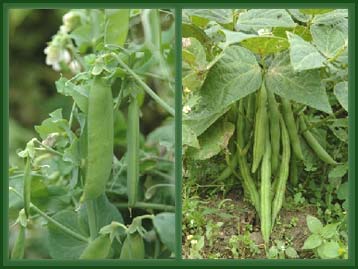
Detailed Costa Rica Perspective
Approximately sixty Costa Ricans
attended the event, representing every major agricultural
region of the country, from the Pacific to the Atlantic
and border to border. All important organic growing
coops and growers' groups had at least one participant
and many paid through locally raised funds. There
has never been a practical workshop in Costa Rica
with this broad attendance. Many of the participants,
and the groups they represented, were known to each
other only by reputation, and even Ticos (Costa
Ricans) had to read name badges to know their 'neighbors.'
A very important group of participants were the
fifteen field agents of the Ministry of Agriculture
and Livestock (MAG) who attended. They represented
all parts of the country and are officially charged
with supporting organic production."
It is already clear that many
local events will be held to share what was learned
at the workshop. The event served not only to impart
knowledge but also to bond growers in a common experience.
Jack Perella, the Costa Rican Coordinator for the
Workshop says, “Costa Rica may become the
most 'double-dug' (per capita) country in the world."
FIELD SITES
1. Escuela Manuel MarÌa
Gutièrrez, San Pedro de Coronado
This is an elementary school that
is a close neighbor of Finca del Lago and a personal
project. Jack Perella and his wife Brigitte have
supported the school for over ten years in a variety
of ways. The Director, 6 instructors, and 18 students
attended Monday’s inaugural event.
While the area developed had been
used before as a vegetable garden, long neglect
made the site difficult, with hard soil and uneven
ground. The number of beds needs to increase, and
Jack is going to send his workers to train parents
and staff. The site itself is well-protected from
both wind and intruders, and can be further developed.
2. Finca Cristina
This was the dream site. It is
near to Escuela Gutièrrez, but has been a
working organic farm for years. The soil was loose
and fertile. The team was able to develop over 20,
100 sq ft prime growing beds, and cut green material
for compost for use at other field sites that needed
this. The owner, Cristina RodrÌguez, is an
older woman who simply did not have the physical
strength necessary for double-digging. Now that
this has been done, the beds can be maintained.
This parcel will† become a model of organic
production.
Cristina receives school children
to learn about gardening regularly, and agriculture
students from the University of Costa Rica do their
field work with her. The forecast for this site
is excellent.
3. Centro Diurno del Tercero Edad
de Coronado
This is a senior citizens home
in the center of Coronado, next to the Centro Agricola.
They have had a vegetable garden for years, but
never one that was properly planned or developed.
When the work group left, a central section had
been developed and a compost unit added. Four residents
received training, and were happily integrated into
the work crew.
This site provides both food and
therapy. The prospects for development are excellent.
4. Escuela Marie Ana MarÌn
This is the largest elementary
school in Costa Rica, with 1600 students in two
shifts. The need for fresh vegetables in their cafeteria
is obvious. The Director, Rosa Otiz, attended the
entire workshop, has enormous energy, and is dedicated
to organic agriculture. The site is relatively small,
with about 10, 100 sq ft growing beds with good
soil, but hidden pipes and concrete slabs under
the soil made the work difficult. The site also
has drainage problems.
The school has many unused areas
that can be developed in the future, and the present
site should be viewed at a preview of future work.
5. Liceo de Coronado
This is the local high school,
with about 1200 students. The enthusiasm could not
be higher. Many students and instructors spontaneously
came to work on the site, and at the end of the
workshop ten beds had been developed. The Board
of Directors of the school is willing to invest
money to build a fence to protect the site.
This garden was long-planned by
the school, but there were never enough resources
to build it. Now it is started. If enthusiasm and
commitment can build a garden, this is the place.
6. Misiona de las hermanas de
caridad
This is a senior citizens home
run by a Catholic order of nuns, who prefer to be
anonymous in their work.
The situation at the site is similar
to that at the Centro Diurno, except that they have
a professional gardener who received training. There
has been a vegetable garden for many years, but
this was substantially upgraded during the workshop.
Their interest is not only in growing vegetables
but in developing theraputic gardening.
7. IICA
IICA has had a vegetable garden
for a couple of years, developed by their two gardeners
in their free time. The leader of the work crew
reported that, in spite of the history of the site,
it was not well developed, and many stones were
found in the soil. Both gardeners received training,
have started compost production, and will have the
maintanence of the site as part of their duties.
Because they are professional
staff, and because the Costa Rican delegation to
IICA is directly interested, this site is very likely
to be maintained.
8. Finca Leitόn
This farm is the property of Antonio
Leitόn, the Costa Rican coordinator for Long
Island University. He was formerly a member of the
local Finca del Lago producers' group (as was Cristina)
but his University duties kept him from properly
developing his site. LIU students come to his farm
for training in ecology, and now this garden and
Biointensive techniques will be part of that training.
9. Escuela Filomena Blanco
This elementary school sits on
a windblown hilltop which we dubbed "Heartbreak
Hill." In spite of this, the team did a tremendous
job building a 200 sq ft double-dug bed and compost
unit. This was our most difficult site, and will
require a windbreak (designed by John Jeavons during
his visit) to survive.
The will is there, but so is the
wind. It we can keep this site growing, Biointensive
will work anywhere.
A Look Ahead
The test for all of the school
sites comes soon with Easter Break. If those responsible
water the gardens during this week, the commitment
is real. If the gardens die, it was just initial
enthusiasm. Jack will review all of these sites
the week of April 17 and the non-school sites April10th-14th.
Evening Presentations
| Country |
Presenter |
Organization |
Title |
| 1. Ecuador |
Mônica Medina |
ADYS |
DVD “Lago Agrio” Project |
| 2. Guatemala |
Marco Vinicio Fern·ndez |
Universidad San Carlos |
|
| 3. Mexico |
Ricardo Romero |
Las Cañadas |
Agroecology |
| 4. Mexico |
Karla Arroyo |
Las Cañadas |
Biointensive Method and Seed Production |
| 5. Belize |
Armando Choco |
TCGA |
Organic Chocolate |
| 6. Venezuela |
Jorge RamÌrez |
Acción Campesina |
Unit Project and Cassava Processors |
| 7. Brazil |
Celso Tarcisio Rosso |
ECOA
Rede Pantanal |
Sustainable Community Development |
| 8. Bolivia |
Urbelinda Ferrufino |
ASEO Asociación Ecológica
de Oriente |
Projects |
| 9. Costa Rica |
Juan Arriaga |
Sol Verde |
Our Daily Sun |
| 10. Colombia |
Jorge Madrid |
Universidad Católica de Oriente |
Carrot Seed Production |
| 11. Colombia |
Juan Carlos Montoya |
Universidad Católica de Oriente |
University Programs |
| 12. Chile |
Lilian Barrientos |
Escuela Bahai Nueva Imperial |
Agroecology Project |
| 13. Uruguay |
Pablo Machado
Yvet Yvet Álvarez |
JardÌn Sol y Mar Productor Org·nico |
Ecostore and Ecofair Organic Products Sale |
| 14. Panama |
Jeremías Concepción |
FUNDICEP / MIDA |
Soil Conservation |
| 15. Argentina |
Fernando PÌa |
CIESA |
Biointensive Method |
| 16. Peru |
Ruth Huayta Mango |
AEDES |
Organic Agriculture |
| 17. Paraguay |
Adolfino Acosta |
Escuela San Francisco de AsÌs |
Achievements and Work with the Biointensive
Method |
| 18. Nicaragua |
Isabel ChavarrÌa |
Universidad Nacional Agraria |
Experience with Organic Fertilizers |
| 19. Peru |
Mauro Sarmiento
Juan Pablo Álvarez |
Instituto Rural Valle Grande Cañete |
Organic Medicinal Herbs |
| 20. El Salvador |
Cristóbal Barrera
Tomás Urías |
Proyecto “Flora Salvadoreña” |
Projects |
| 21. Panama |
Melquíades Rojas A. |
Asociación de Productos Org·nicos
de Panam· |
Organic Agriculture: An Alternative to Panama |
* From Tuesday the 28th to Thursday
the 30th at night, the participants spontaneously
presented to the group the projects they are working
on and in which they are planning to include the
Biointensive Method.
Interviews – An In-Depth
Sampling of a Few Participants
FABIÁN PACHECO
COSTA RICA
Fabián was born 27 years
ago and was raised in a family with idealistic values
and principles in a rural area in the Costa Rican
Pacific. He grew up seeing people working the land,
and since he was a little boy he felt attracted
by the peasant movement of his region. That’s
when he discovered his agricultural vocation.
Fabi·n became an activist and has participated
in the Movimiento Ecologista Social (Social Environmental
Movement) since he was 15 years old. This movement
is for him like a family that not only creates alternatives
but is also unwilling to accept a world that constantly
looks for privatization and sterilizes the planet’s
biosphere. Later, he became a graduate in Agriculture
at EARTH University. Since then he has actively
participated in different organizations and has
fought for the rights of indigenous people, environmental
groups from Costa Rica, Creole (heritage) seeds,
and a Latin America free of GMO’s among other
things. He is also a producer and a broadcaster
of a national radio program that talks about topics
related to social ecology.
One day he was searching for more
information about agroecology on the Internet and
was suddenly attracted to the GROW BIOINTENSIVE
model, and so he decided to contact Jack Perella
(a Biointensive Method expert in Costa Rica) and
ask him for more information. The proposal presented
by Jack motivated him even more, and in the year
2003 he decided to go to Willits, California, in
order to do a 4-month internship with John Jeavons
to learn more about the Biointensive Method.
His contact with Ecology Action
changed the course of his life because he deeply
connected with its people and its goals. To Fabian
the GROW BIOINTENSIVE Method is an ideal tool for
agroecology that incorporates a production model
to rescue seeds and to achieve a sustainable and
efficient food sovereignty within anybody’s
reach.
”I graduated with a degree
in Agronomy,” he says, “but if there
is something that has been useful for me to work
with the indigenous communities in my country, that
is what I learned with John Jeavons in Ecology Action.”
Fabian is currently working as
a professor at the Centro Especializado de Agricultura
Org·nica (Specialized Center in Organic Agriculture)
at the INA–Instituto Nacional de Aprendizaje
(Nacional Institute for Learning). There he has
given a lot of workshops to indigenous communities
in Costa Rica and has discovered that the people
connect with the Biointensive Method very quickly
and effectively because it is an easy to understand
method based in the ways of the environment.
His vision is to continue working
as a professor, to carry out pilot projects with
Biointensive Agriculture at the INA Center, to continue
working with environmental movements in all Latin
America and in the far future to retire, lead a
quieter life and produce his own food in a natural,
sustainable way.
For the moment, he feels that
he still has a lot to give to communities regarding
training and direction.
“The Biointensive Method
has broadened my horizons and has taken me towards
a kind of agriculture that has fulfilled my expectations
and interests for a fair and environmentally healthy
world.”
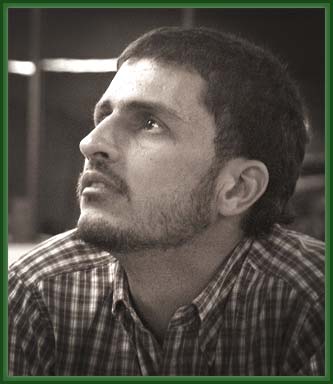
MAURO RONALD SARMIENTO and
JUAN PABLO ÁLVAREZ
Perú
Ten or fifteen years ago, the
Instituto Rural Valle Grande (Rural Institute Valle
Grande) which belongs to the Catholic Church (Opus
Day www.irvg.org)
started a project in the Peruvian mountains.
Currently, the Institute is working
with 11 mountain communities and benefiting with
productive projects children from 7 elementary schools
and 300 families. The objective of these projects
is that the children value their parents’
small farms and learn organic agriculture techniques
in their schools’ plots so that later they
can carry out these techniqueds in their homes.
In this way, when the children finish school they
will go back to their small farms and achieve food
security.
The projects are carried out in
the schools’ plots, and it is stipulated in
the curriculum that the children will have to devote
some hours to their small farms (2 hours per week
minimum). During vacation the parents also getinvolved
and give support to their children to take care
of the piece of land.
On the pieces of land, people
grow vegetables, but mainly medicinal herbs which
the Instituto Rural Valle Grande buys from them
at a fair price in order to make different kinds
of tea. With the money they get from the sales,
the students finance their graduation party or pay
for their school materials, and in this way they
help their parents–who have very limited buying
power.
“These communities are facing
a problem now: there are not any young people in
their communities, because when they finish school
their parents want them to move to the city and
look for a job … but now with this project,
young people are motivated to stay on their small
farms. In this way, the project improves the quality
of life of the people and avoids the migration of
young people to the cities because now they have
new alternatives to live.”
In the past, alfalfa (lucerne)
was grown on many pieces of land, but people didn’t
get a lot of benefits from it. Now, with the medicinal
herbs project, children receive money every 2 or
3 months. Their schools are in charge of distributing
the money in an equitable way.
An important part of the project
is to teach people to appreciate their traditions
again, so every year in the month of June or July
a fair is held. The 11 communities take part, and
each of them gets ready to participate in the Creole
(heritage) seeds contest, and in the typical food,
traditional medicine, dance or music events. A selection
of the best presentations is made, and the children
who turn out to be the final runners-up explain
presentation in detail to the public and the judges.
The prizes they receive are educational materials,
encyclopedias, desks or bicycles. The technicians
in charge of the project say: “The presentations
are incredible, and the way in which children learn
and get to know their roots is amazing, too.”
The Instituto Valle Grande supports
its beneficiaries with loans in kind and technical
consulting. We do a follow-up by visiting each small
farm twice every month. “Many times we have
to start from scratch with the children because
they have lost their ability to work the land.”
The pieces of land are worked
with traditional organic agriculture, but the technicians
assured me that, now that they know the GROW BIOINTENSIVE
Method, that’s the model they are planning
to use because it is going to help them improve
their productivity in a significant way. “We
want to apply the technology of the Biointensive
Method as soon as we go back to our country because
it is easier to handle the crops in beds. The market
demands a bigger amount of medicinal plants, and
we are not able to meet that demand. However, this
method opens up a new possibility to improve our
yields and to include people who own small pieces
of land because if we produce more in a smaller
space it means that the model adapts perfectly to
the small-scale production.”
At the Institute, they have an
experimental center where they also want to implement
this agricultural model to share it with more people.
”What we want to transmit
is not only technical training but also human values.
Our intention is to continue working, to leave something,
to see happiness reflected in people’s faces,
to see the face of an excited child, to be an example,
and to give love to people.
”We are really grateful
to John Jeavons and we are going to continue his
work and help him spread it, like seeds that germinate
in different fields.”
FRANCISCO ANTONIO RODAS
EL SALVADOR
”I worked for an Association
of Carmelites. The nuns there have as a mission
to rescue children who live in the streets. They
started with 50 children 3 years ago, and now they
have almost 100 from newborn babies to 15-year-old
teenagers. They become the children’s family
and pay for their studies, home, and food. In order
to be able to achieve this, they look for international
help for their shelter.”
Among the people who have supported
this cause are a doctor who donated approximately
two hectares of land and some people from Canada—friends
of Mr. John Jeavons—who gave them the English
version of How To Grow More Vegetables .
Francisco was the person in charge
of the production of the land, so he started working
with those elements. At the beginning it was not
easy at all because the land was not good for growing
food and was located on a very steep slope with
a lot of grass. Besides, Francisco does not understand
English, so he interpreted the text as well as he
could and put into practice the production model
that had been entrusted to him through John Jeavons’
book.
The first thing he did was to
devote his time to making compost. “There
were two of us working on compost from Monday to
Monday. At the beginning we were not very organized,
and since we were learning, it sometimes took us
half a day to make one pile of compost; besides
we didn’t have the necessary tools. For example,
we didn’t have a wheelbarrow so we had to
carry all the materials in buckets. We got the materials
for the compost from the people who live in the
surrounding areas and also from the market waste.”
They also devoted time to working
the land—in the area with the steepest slope—in
order to maintain the soil with living barriers
and contour lines. Little by little, they started
to make the beds and bought two forks. However,
since tools were very expensive they couldn’t
buy the spade and they had to work with what they
had. “In the shelter, I was asked to transmit
to the children and teenagers the knowledge related
to the agricultural method we were using both in
a theoretical and in a practical way.”
”We started with 5 beds
and began spreading the method’s philosophy
in the minds of the children. Two years later and
thanks to the desire of 5 teenagers and 3 children
who helped us from 3 to 5 hours a week, we had 300
beds. We were finally able to plant a beautiful
garden!”
They were also able to dig a well
and to get some chickens, rabbits, doves, and even
some horses. Besides, they planted 700 different
kinds of fruit trees.
With the work experience he obtained,
Francisco became really interested in the situation
of the peasants in his country; therefore, he started
spreading the Method and his experience outside
the shelter and also organized fairs with the peasants
and with the help of the Ministry of Agriculture.
With great happiness Francisco
exclaimed: “I planted a seed in the shelter,
and now I’m moving to plant another seed,
but this time among the peasants who live in my
area. My goal is to work in order to pass the GROW
BIOINTENSIVE Method on to them. I don’t know
exactly how I’m going to achieve that because
I don’t have any help or resources to do it,
but that will be my struggle. I’ll figure
our how, and I’ll do it!”
For the time being and in order
to support himself and his family, Francisco works
his father’s land (approximately 2 hectares).
There he grows different kinds of flowers in Biointensive
beds and also different kinds of native trees that
he uses to give shade to part of his field. Over
time, by using compost, he has been able to improve
his soil and flowers. “The plot is now beautiful,
and my family is very happy!” says Francisco
with some sparkle in his eyes.
In his free afternoons, he teaches
catechism and gives talks to children and teenagers.
His mission now is to continue
fighting to take the GROW BIOINTENSIVE Method to
the farmers in his country. “I want to see
a change among my peasant brothers, that’s
my goal. Through the Biointensive Method, I understood
that nature talks to us, and we have to learn to
listen and understand what it is saying. I ask God
to give me the strength and wisdom to be able to
spread this.”
MERCEDES TORRES BARREIRO
ECUADOR
Mercedes was born in the historical
Center of Quito. “I’m totally urban,
I grew up surrounded by churches, bells, convoluted
streets, etc. I strengthened my historical identity
and my roots through the stories my grandmother
told me.” Since she was a little girl, she
realized she needed to teach and to recreate the
history of her country in her games or by telling
stories and tales to whoever happened to be with
her.
Some years later, she became a
Professor and taught some groups how to read and
how to write. She studied Educational Psychology
and took a postgraduate course in Group Therapy
and specialized in Human Nature. Then, she started
working in projects to benefit the society in Latin
America and the Caribbean. Life continued giving
her opportunities to teach, and later she became
a facilitator in projects related to Non-Formal
Education for Adults.
During those 10 years, Mercedes
understood that people in Latin America share the
same dreams and ambitions but also the same challenges
and poverty. At that moment it was really frustrating
for her not to know how to respond to those needs.
In the year 2000, Mercedes lost
everything she had–including her hope—due
to the terrible economic, political, and social
crisis that hit her country. Around the middle of
the same year, Juan Manuel MartÌnez invited
her to participate in the making of a manual about
the Biointensive Method that would be done in collaboration
with John Jeavons.
Finding the Biointensive Method
and learning about John Jeavons’ life commitment
inspired Mercedes in such a way that she undertook
the challenge of continuing her mission as a teacher
“to educate people to face life by giving
them the potential they need to do so. I want to
show people that the possibility of making their
dreams come true is in their hands, that we have
to open our hands, minds, and heart to organize
ourselves and to grow stronger together…
Among the many projects which
Mercedes is currently working on, there is one carried
out in collaboration with the Ministry of Social
Welfare in Ecuador, and whose purpose is to eradicate
child labor. Mercedes’ work is to support
those children’s families in order to decrease
the economic pressure in the home so that parents
do not make their children work. To achieve that,
she got some funding and a 3-hectare farm to create
a Biointensive Agriculture Community School that
represents an initial impact in Ecuador’s
northern region and that has 3 associated demonstration
gardens in other regions of the country. “It
is a long-term project which we are working on with
the purpose of guaranteeing the food security of
the families and the creation of employment through
the making of costume jewelry based on natural seeds,
the drying of medicinal plants, the production of
natural seeds, the production of marmalades, and
the organization of business cooperatives, all of
this around a Biointensive garden.”
In the future, Mercedes wishes
to continue working with the Biointensive Method
and plans to establish Demonstration and Training
Centers in all of her country’s provinces
(she has already done this in three of them). Around
these centers there would be associated gardens
to produce healthy food and seeds and to be permanent
models for other groups. Then, she would link these
gardens with productive networks to form a Biointensive
Farmers National Network and share the experience
with other countries to finally create a Big Latin
American Network. “This is one of my dreams,
and I know I can make it come true. In this workshop
here in Costa Rica, I’m already making some
contacts and reaching agreements with some partners
from other countries. For example, our friends from
the Dominican Republic will give a course about
organic cacao, our friends from Paraguay will teach
us how to process milk and handle organic sugar
cane, and we will teach them how to make marmalades.
Our friends from Las CaÒadas, Mexico, will
teach us about seed production, and a friend from
the United States will go to Ecuador to give us
some advice on how to look for funding. I can see
a spirit of solidarity is emerging, a spirit of
reciprocity towards life itself that makes us give
to others what life has given to us.”
With a childish smile she says,
“As you can see, right now I’m telling
you about my dreams. I also dream of forming a convoy
of young people from the different universities
to visit every province and teach the Biointensive
Method as an alternative for a sustainable life.
This convoy could become a convoy of nations that
walks all around Latin America, little by little,
that goes from town to town, and then in each town
more people become part of that convoy, and we hand
on the message to others. I wonder if there are
other people who are as crazy as I am!”
”The Biointensive Method
has taught me that I need to be respectful toward
t natural processes. At the beginning, I planted
my seeds, and I wanted to see them sprout immediately.
If that didn’t happen, I became anxious. Then
I learned that I have to wait for things to happen
at their own pace. I became patient not only with
the technique but also in my life, and that led
me to reflect on the way in which I lived. Now,
I feel I am another element in the life cycle. This
is the kind of learning that has changed my life.”
In her book “Agujas de Hilo
Azul” (“Blue Thread Needles”),
Mercedes tells the story of a woman who dreams of
being a writer and a sower. The book ends by saying
that the Sower is the one who writes on people’s
skin and that the Writer is the one who plants in
people’s. I believe that has exactly been
Mercedes’ philosophy in life.
URBELINDA
FERRUFINO
BOLIVIA
”I’m Quechua and come
from a very poor family”, says Urbelinda.
“Because we lived in abject poverty, my father
decided to go to Argentina for a few years to look
for a job and left my mother without a house, without
land, and with a lot of children. It was a difficult
period, but we managed to get through it.“
Urbelinda had to work since she
was a little girl with a “small mattock”
in the field and had to take on a series of responsibilities
to help the family. Because of the economic situation,
not all of the children in her family could attend
school. “I did attend school for a while,
but we were so poor that some days we didn’t
have anything to eat—sometimes due to natural
disasters among other causes—so we survived
with the food we were sometimes given at school.”
Urbelinda showed great interest
in studying, but when she finished elementary school
she couldn’t continue her studies because
her parents decided that her oldest brother should
be the one to continue studying. So at 12, she had
to work in the cotton, tomato, and sugar cane fields.
The conditions in those fields were terrible: all
the workers had to sleep on the floor in very limited
spaces, drink water from ponds, get up at 3 o’clock
in the morning to work all day long in the sun and
receive a wage that was not enough for anything.
“I went through this for four years.”
She went back home and one Sunday
her mother sent her to visit one of her aunts in
the city, one who had a good economic status and
high social standing. When she got to her aunt’s
house, there were two other well-to-do relatives
visiting, and Urbelinda remembers that all of them
looked at her from head to toe and said she was
a very beautiful girl but that she was very poor
and didn’t go to school. Her aunts sent her
mother a message saying they wanted to see her.
When she got home, Urbelinda told her mother about
it, and she immediately went to the city to talk
to her relatives. When her mother got back, she
told her to get ready because she was going to go
to the city to live with her aunt. For her mother,
the opportunity for her daughter to go to school
was a blessing, and that’s why she decided
to send her to the city.
Urbelinda remembers that she got
to her uncle and aunt’s house with a small
suitcase made of wood and the hope to study. However,
her life with that family was one of suffering,
abuse, and mistreatment because they didn’t
recognize her as a niece and used her as a maid.
They made her work at top speed, and in exchange
she could attend a public school located across
the street from the house. Urbelinda turned out
to be one of the best students at school, but the
work she had to do at her aunt’s house became
heavier and heavier every day. “The only thing
that gave me the courage to continue was to know
that I was studying to have a better life.”
Some years passed, and Urbelinda
saved the little money she earned so that her mother
could buy her a cow with the purpose of selling
it to pay for her registration to enter the university.
And so it happened: she sold the cow, entered the
university, and studied seriously and at the same
time worked hard until she got a scholarship with
boarding at the university, and then she could leave
her uncle and aunt’s house.
Everything turned out wonderfully at the university.
She majored in Medicine and when she finished her
studies she did her internship in Santa Cruz. There
she fell in love with a doctor and got married.
Soon, both of them got a 4-year scholarship to specialize
in Italy.
Once back in their country, they
started working enthusiastically but faced a lot
of discrimination on the part of their colleagues,
and so it became harder and harder to get a job.
Urbelinda started teaching at universities and worked
on the periphery of her region. She had a lot of
experience in Pediatric Medicine but no job opportunities.
Due to the lack of a job in her
region, she decided to major in Biology in 1992.
Because of that she found out about and became involved
in topics related to the health of the planet, pollution,
loss and mishandling of natural resources and the
consequences people suffer due to all of that. So
when she finished her major, she chose to take jobs
related to those topics.
She became a collaborator in the
Asociación Ecológica del Oriente (Ecological
Association of the East) and got a master’s
degree in Epidemiology and Advanced Pediatrics.
Because of the high degree of malnutrition in her
country, she thought it was of the utmost importance
to find a solution for food security and since very
little could be done to heal people, she focused
on preventive medicine.
”In the year 2001, Juan
Manuel MartÌnez, representative of the GROW
BIOINTENSIVE Method for Mexico and Latin America,
who was in the province of Santa Cruz in Bolivia
started looking for ecological associations in his
hotel’s telephone directory and found ours.
He called the office, and I got the call. To start
with, I became enthusiastic about his approach to
the topic of growing food, and so we agreed to meet
to talk in-depth about it. That afternoon, Juan
Manuel explained the Biointensive Method to me,
and I became really interested in its methodology
and results. So I started looking for publications
and promoting the Method among some groups, but
I felt I was a liar because I had never tried it
myself; all I knew came from the books.”
In 2003, she contacted Juan Manuel
and asked him for a training course on the GROW
BIOINTENSIVE Method for Paraguay, Argentina, and
Bolivia. That course would be given at the San Francisco
de AsÌs school through the Red de Lucha contra
la Desertificación (Struggle Against Desertification
Network). It was a very successful workshop! Urbelinda
attended and learned more about the Method, but
since she was a part of the coordinating group she
could not participate in the practical sessions
because she had to take care of other tasks.
In 2004, she won a scholarship
from the Instituto Ambiental (Environmental Institute)
to attend a conference in Mexico. When she heard
that, she contacted Juan Manuel and told him of
her great interest to get trained in the Biointensive
Method. Juan Manuel arranged a 15-day course for
her to become trained in the Biointensive Garden
of the Agroecological Ranch “Las CaÒadas”
with Ricardo Romero in Huatusco, Veracruz. In 2005,
in collaboration with Fernando PÌa, an Agronomist
with a great deal of experience in the Biointensive
Method in Argentina, she organized a course in Bolivia
addressed to professionals and the general public.
Thirty-five people were trained in that course.
She implemented Biointensive,
demonstration beds in the Ecological Association’s
garden to show the neighbors and the communities
the results that can be obtained with the Method
and to convince them of the fact that it works and
that it is worthwhile to practice.
”I have had to face, together
with some groups of peasants and women, the economic
limitations to introduce the Method because at the
beginning you need economic support to start a garden.
I’m 100% convinced of the fact that if this
Method were implemented and given a boost in the
suburban areas, the problems of hunger and malnutrition
would disappear. But politicians are not interested
in solving these problems. I have already presented
several projects to create Biointensive plots of
land on the periphery of the city of Santa Cruz
with which we would solve many of the social, environmental,
and economic problems of the region, but until this
day I haven’t received any kind of support.”
Urbelinda’s plans for the
future include continuing to work for the AsociaciÛn
EcolÛgica de Oriente to mainly promote the
GROW BIOINTENSIVE Method, the “meliponas”
(bees without sting), and agroforestry projects
with the idea of forming whole systems. One of her
projects is to start a model agricultural school
on a piece of land that she owns. That school would
have numerous opportunities to transmit the Method
through demonstrations and not only through theoretical
sessions. “The possibilities to spread it
are abundant, but the main constraint is limited
economic resources. In order to achieve what we
want, it is extremely important to be constant and
loyal and to have a clear goal. It is said that
with persistence, mountains can be moved, and that’s
my philosophy.”
Since she was a little girl, Urbelinda
has had a special “gift” because everything
she plants, grows beautifully. So her family and
her neighbors always looked for her to plant things.
They even used to say, “If you want something
to grow fast, just put it in Urbelinda’s small
hands, and it will grow.”
”God has blessed me abundantly
and I always feel He is by my side. I go crazy with
water and green things. I love to caress plants
and talk to them. When I am among plants, I do not
get tired, I do not feel hungry or thirsty, and
time passes without my noticing it. It is magical!”
Contributors to the Workshop Report:
Adriana Gusman Salinas
Jack Perella
John Jeavons
Juan Martinez Valdez
Oneyda Martinez

THANKS to Everyone Who
Helped with the Workshop!
Amy Melious,
Salt Spring Island, British Colombia, Canada - Photography
Costa Rican Ministry of Agriculture and
Livestock - MAG, San Jose, Costa Rica -
Assistance
Edna Wardlaw Charitable Trust,
Tacoma Park, Maryland - Financial Assistance
Erik Erikson, Vazquez de Coronado,
Costa Rica – Security Assistance
Everyone at the Central American Institute
for Social Studies - ICAES, Vazquez de
Coronado, Costa Rica - Facilities and Assistance
Everyone at the Agricultural Center - Centro
Agricola, Vazquez de Coronado, Costa Rica
- Tools and Agricultural Materials
Felicia Echeverria Hermoso, MAG,
San Jose, Costa Rica - Assistance
Helen Hilton Raiser, San Francisco,
California - Financial Assistance
Jack and Brigitte Perella - Finca
del Lago, Vazquez de Coronado, Costa Rica - Coordination
and Assistance
John and Cynthia Jeavons and Everyone at
Ecology Action, Willits, California, USA
- Coordination and Assistance
Juan Manuel Martinez Valdez, Ecology and
Population - ECOPOL, Al Culco, Estado de
Mexico, Mexico - Coordination and Assistance
Maria Isabel Araya, Carlos Enrique Sanchez
Mendez and Family, Vazquez de Coronado,
Costa Rica - Assistance
Melanie Mintz, Oakland, California
- Translation
Mercedes Torres Berrones, Self-sufficiency,
Development and Society - ADYS, Quito, Ecuador –
Assistance
Miguel Castro, Programa Nacional para la
Agricultura Organica/National Program for Organic
Agriculture – PNAO, Barrialde Heredia,
Costa Rica
Oneyda Martinez, Al Culco, Estado
de Mexico, Mexico - Translation
Organic Agriculture Movement of Costa Rica
- MAOCO, San Jose, Costa Rica - Assistance
Ramon Montoya Henao and Everyone at International
Institute for Cooperation in Agriculture - IICA,
Vazquez de Coronado, Costa Rica - Facilities and
Assistance
Reed Ellis Aubin, Port Townsend,
Washington - Translation
Salvador Diaz, Monterrey, Nuevo
Leon, Mexico - Coordination and Assistance, Technician
and Videographer
Sonoma County Community Foundation - Schulz
Donor Advised Fund, Santa Rosa, California
- Financial Assistance
Workshop Participants – Assistance
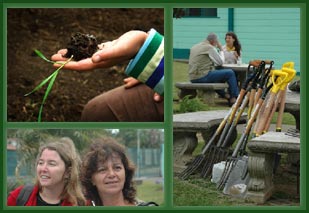
Upcoming Workshop/Course
Timetable
| Country |
Month/Year |
Activities |
| Belize |
May 2006 |
One 3-day workshop |
| Bolivia |
August 2006 |
Two 3-day workshop
Universities in Cochabamba and La Paz |
| Brazil |
October 2006 |
One 3-day workshop
Conferences at Universities in Curitiba |
| Colombia |
September 2006 |
Conferences at Universities
Workshop |
| Costa Rica |
November 2006 |
Workshop, Universities |
| El Salvador |
November 2006 |
2 Workshops |
| Guatemala |
September 2006 |
Workshop, Conference |
| Nicaragua |
November 2006 |
Workshop, Conference |
| Panama |
January 2007 |
Workshop, Conference, Universities |
| Paraguay |
August 2006 |
Workshop, Universities |
| Peru |
June 2006 |
Participant in the Seed Production Workshop
in Cuzco, Workshop and 3 Conferences
Universities |
| Uruguay |
February 2007 |
Workshop, visit to universities |
| Dominican Republic |
July 2006 |
Workshop |
| Venezuela |
September 2006 |
Course, Universities |
Programmed - Confirmed
- Due to the fact that the timing of this agenda
is very dense and the funding is not assured,
the dates may change. Very probably the activities
programmed to take place in November will be moved
to the year 2007 except possibly for El Salvador.
- Argentina, Chile, Ecuador and Mèxico
are not included.
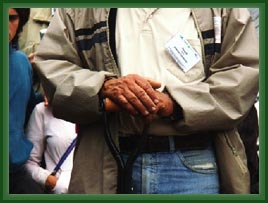
Some Results
Colombia
Dear Juan Manuel,
Some days have passed since we
said good-bye in San Jose and the truth is that
we miss the friends we met in the workshop everyday
more; however, in the distance I would like you
to know that we are very happy because the workshop
was a delightful and extremely valuable experience
for us and that we think it will be the same for
people here at our university and in our region
very soon.
The truth is that there are already
many professors inquiring about the Method and in
the next days we will be giving a small course to
share what we learned from all of you--our teachers.
Also, we are organizing together with two students
from the last semesters a research project to investigate
how to adapt the Method to our conditions, our crops,
and our culture but always respecting the theoretical
basisÜof the Method and that are really clear
to us. Besides, we have been using Fernando's video
to show some groups of students some aspects of
the Biointensive Method and they are already asking
us to give a practical course to teach them how
toÜstart out with the Method.ÜIn addition,
since the university is developing some programs
with poor rural communities that have problems regarding
their food security, we have thought about the fact
that we have to work with the Biointensive Method
with the people that work with those communities.
There's another program called Educational Rural
Service and through that program it is possible
that people who live in the country can finish their
basic education (elementary and junior high school).
We will try toÜget the instructors involved
so that they start working with the Method with
the students. This is what I can tell you regarding
the results of the work we have been doing after
the workshop.
I apologize for not having started
this e-mail by asking how you are and how you found
everything when you arrived in Mexico. We want you
to know that we are really thankful to you for having
had the privilege of receiving your invitation to
attend the course. We hope that in the near future
we can share some time again--hopefully here in
Rionegro, Colombia, so that theÜmore people
get to know and use the Method.
A fraternal hug to you and please
give my love to all our Mexican friends.
Cordially,
Juan Carlos Montoya Vivas.
Universidad Cat€lica de Oriente
Rionegro, Colombia
Dominican Republic
EXPECTED RESULTS
To define the concrete
and tangible results that will be brought
about by the execution of the planned activities.
Those results should clearly contribute
to the securing of the specific goal established
in advance.
• 50 Agricultural
Technicians will get to know the Method
and will be able to transfer it to other
technicians and producers inside their job
areas.
• 50 University students will have
a new tool to be applied in their future
workplaces. Besides, it will be an original
topic to be used for their theses.
• 50 Producers and housewives will
be able to implement the Method in their
production farms and thus will improve the
environmental, nutritional, and poverty
problems present in their families and communities.
Also they will be guided to give these techniques
to other settlers in rural areas.
• In principle, 10 high schools–including
the Santo Tomós de Aquino Experimental
School from the UCATECI–will start
the practical sessions to adopt the Biointensive
Method in their school gardens.
• A Regional Center for the Development
of Biointensive Agriculture will be installed.
In that place we will monitor the work started
after having been trained by an expert Mexican.
• A Transfer Project with the resident
families will be implemented around the
Regional Center with the purpose of creating
a model community based on the Biointensive
Method. |
CONCRETE ACTIVITES TO BE
CARRIED OUT
| Type |
Activity Description |
Beginning Date |
End Date |
| Meeting |
Meeting with authorities of the UCATECI
to talk about the Biointensive Method and
the work methodology. Press Conference. |
7/17/06 |
7/17/06 |
| Consultancy |
Awareness Workshop for the implementation
of the Biointensive Method in the Dominican
Republic. (Technicians and authorities from
the UCATECI.) |
7/17/06 |
7/17/06 |
| Seminar |
Talk-Lecture about the Biointensive Method
and the importance of it. (University students,
local institutions, and neighbor associations.) |
7/17/06 |
7/17/06 |
| Diagnosis |
Visit to the Organic and Sustainable Agriculture
Projects in La Vega and Jarabacoa. |
7/18/06 |
7/18/06 |
| Publicity |
Interview-Conference for a regional channel’s
TV program and a national radio station. |
7/18/06 |
7/18/06 |
| Seminar |
Talk-Lecture about the Biointensive Method
and the importance of it. (Producer Associations
and NGOs linked to the sector.) |
7/18/06 |
7/18/06 |
| Training |
Course-Workshop about the Biointensive Method
with technicians and producers. |
7/19/06 |
7/21/06 |
| Publicity |
Interview-Conference for a regional channel’s
TV program. |
7/22/06 |
7/22/06 |
| Consultancy |
(Continues) Awareness Workshop for the implementation
of the Biointensive Method in the Dominican
Republic. Project Elaboration. (Technicians
and authorities from the UCATECI.) |
7/22/06 |
7/22/06 |
Subject: Report and Request for
Material
Mr. John Jeavons,
As a Principal of the Agricultural
Engineering School of the Universidad Central del
Ecuador, it is a pleasure for me to write to you
to thank you for the knowledge you shared with us
during the Workshop on Biointensive Agriculture
held in Costa Rica which I attended and from which
I keep really good memories.
When I returned, I immediately
started working on a 9-bed garden that also has
fruit trees, I feel really happy and thankful for
this. At the university, we are consolidating a
Demonstration Biointensive Garden; ADYS is giving
us advice and I already have the support of the
Social Welfare Ministry in my country. It is a 50-bed
garden and each student has to start one at home
or with a neighbor to be able to get a grade; this
inÜmy opinion will have a great multiplying
effect on what I learned. Besides, we are about
to approve the first thesis in which a student will
determine the effect several compost treatments
would have on the physicochemical and biological
characteristics of the soil and production because
we are going toÜcarry on a research follow-up
in order to show the benefits of this sustainable
method. Also, we already reached an agreement to
establish another demonstration center in another
ranch that belongs to the university. There, we
will be working with ADYS to promote the Method
in the province of Cotopaxi.
In order to prepare students better, we need to
have more bibliographic material. Due to this, I
would like to request obligingly your collaboration
to help the library that belongs to the Agricultural
Science Faculty of the University. We need all the
printed material and videos you have published which
will serve as reference material for students and
professors.
I would like to thank you in advance.
Kind regards,
Ing. M.Sc. Arturo Orquera C.
Director Escuela Ingeniería Agronómica
Facultad Ciencias Agrícolas
Universidad Central del Ecuador
Ciudadela Universitaria
Casilla Postal A-46-07
Quito – Ecuador
Schedule for the 2006
Biointensive Basic-Level Workshop
March 27th to April 1st,
2006
The main language was Spanish,
and there were three English translators. Materials
were in both Spanish and English.
Monday 27th
8.00-9.30 Registration of Participants
9.30-10.30 Inauguration Staff
10.30-11.30 Introductory Presentation
John Jeavons
11.30-12.00 Coffee break
12.00-13.00 Introductory Presentation (continued)
John Jeavons
13.00-14.0 Lunch
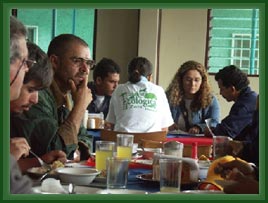
14.00-15.30 Principles and Techniques
of the Biointensive Method
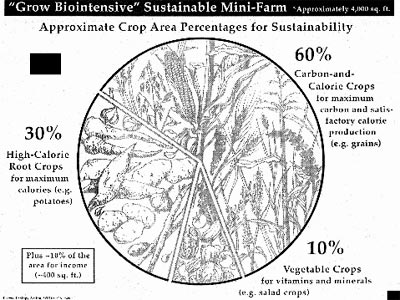
15.30-17.30 Double-digging demonstration
John Jeavons
17.30-18.00 Organization of Work
Groups Staff
Tuesday 28th
8.30-12.30
Field Practice: Double Digging Instructors
12.30-13.30
Lunch
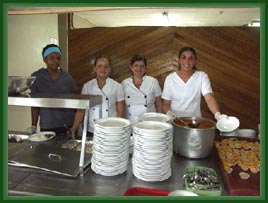
13.30-15.30
Compost John Jeavons
15.30-17.30
Compost: demonstration John Jeavons
Wednesday 29th
8.30-12.30
Field practice: Compost Instructor

12.30-13.30
Lunch

13.30-15.30
Close Spacing, Crop Rotation and Companion Planting
John Jeavons
15.30-17.30
Demonstration John Jeavons
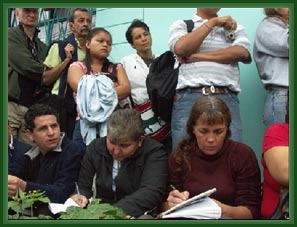
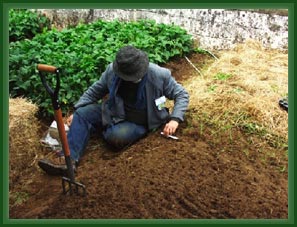
Thursday 30th
8.30-12.30
Field Practice: Close Spacing, Companion Planting
and Crop Rotation Instructors
12.30-13.30
Lunch
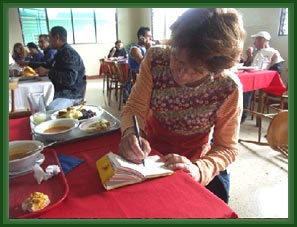
13.30-15.30
Sustainability in the garden, 60-30-10 model John
Jeavons

15.30-17.30
Demonstration John Jeavons
Friday 31st
8.30-12.30
Field Practice: Crop 60-30-10 model, finish gardens
for visitors
Instructors
12.30-13.30 Lunch
13.30-15.30 Open-Pollinated Seeds
and Whole System John Jeavons
15.30-17.30
Video Summaries of Practice Sites with Live Commentary
John Jeavons
18.00-22.00
Special BBQ Dinner and Social Event with Folk Dancers
Saturday 1st
8.30-12.00
Organic Seed Production Karla Arroyo Rizo and Fabian
Pacheco
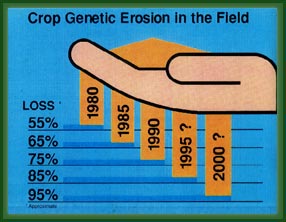
12.00-12.30
Diploma-Giving and Closing Ceremony
12.30-13.30
Lunch
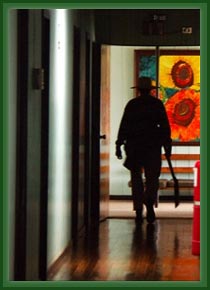
For more information. See:
www.growbiointensive.com
www.bountifulgardens.com
www.commongroundinpaloalto.org

|

